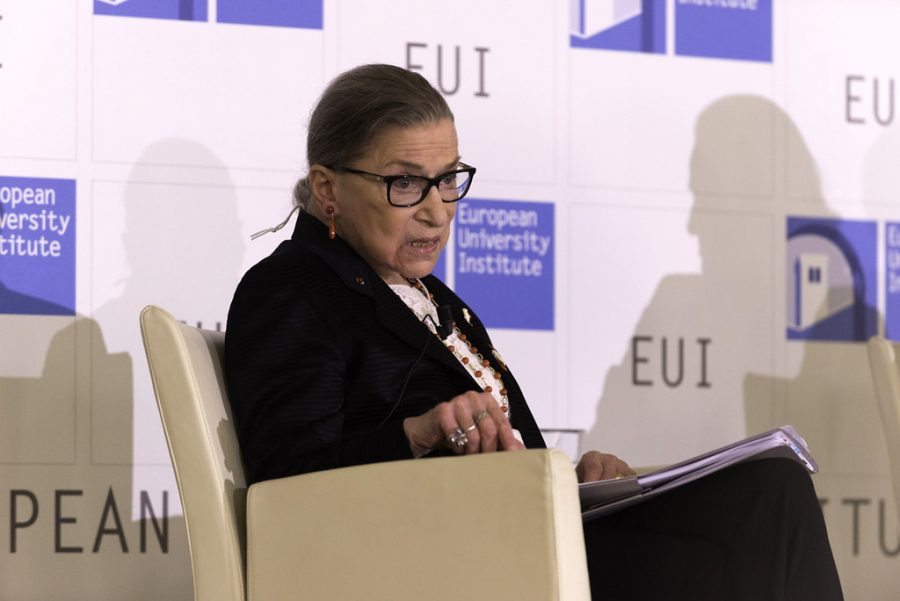Women who paved the way: Ruth Bader Ginsburg
Courtesy of European University Institute
Ruth Bader Ginsburg spent her career advocating for equal rights and separating church and state.
At the age of 17, she began college after receiving a full scholarship and in 1954, Ginsburg graduated first in her class at Cornell University with a degree in government. She married her husband Martin Ginsburg, a law student, in the same year. Martin was drafted into the military and the couple moved to Oklahoma. There, Ruth could only get a job as a typist even though she scored very high on the civil service exam. When she got pregnant with their daughter Jane, she was fired from her typist job.
Two years later, the family moved back east and Ruth and Martin began studying at Harvard University. She was one of nine women in a class of 500 students. The dean of the school questioned Ginsburg on why she was wasting a space that should have gone to a man but she did not let the hostility stop her and she worked hard toward her law degree, becoming a member of the Harvard Law Review.
In 1956, Martin was diagnosed with testicular cancer and began treatment with surgeries and radiation. Ruth was left to care for a three-year-old and her sick husband while carrying her course load. She took notes for her husband on top of the Harvard Law Review and her schoolwork. Martin survived cancer and graduated from Harvard, getting a job at a law firm in New York City. Ruth still had a year of studies left so she transferred to Columbia University and graduated at the top of her class. At this time, women were not welcomed to work in law firms.
This led to Ginsburg clerking for a U.S. District Judge and then teaching. She taught at Rutgers University Law School from 1963 to 1972 until she moved to teach at Columbia University from 1972 to 1980 where she became the first female tenured professor at the school. At Rutgers, she hid her pregnancy by wearing her mother-in-law’s clothes so she would not lose her job. Her ruse turned out to be a success when her contract was renewed.
During the 1970s, Ginsburg served as the director of the Women’s Rights Project of the American Civil Liberties Union (ACLU), a project that she founded. She argued six landmark cases on gender equality to the United States Supreme Court.
Her work did not stop at equality for women. She fought for equality for everyone, such as when she fought a portion of the Social Security Act that favored widows and gave nothing to widowers. In 1980, Jimmy Carter appointed Ginsburg to the U.S. Court of Appeals for the District of Columbia.
She served on the Court of Appeals until 1993 when Bill Clinton appointed her to the U.S. Supreme Court and she was confirmed by the Senate in a vote of 96-3. On the Supreme Court, Ginsburg advocated for gender equality, workers’ rights and separating church and state. In 1996, she wrote the landmark decision in United States v. Virginia which considered it unconstitutional to refuse admittance of women at the Virginia Military Institute.
In 1999, she was awarded the American Bar Association’s Thurgood Marshall Award for her contributions to the fight for gender equality. Ruth Bader Ginsburg passed away on September 18, 2020 from complications due to cancer. She served on the Supreme Court until her death. She left an everlasting legacy after dedicating her life’s work to fighting for others.
Emily Dvareckas graduated from RWU in 2022 with a degree in forensic science. She spent three years with The Hawks’ Herald as the photo editor...






